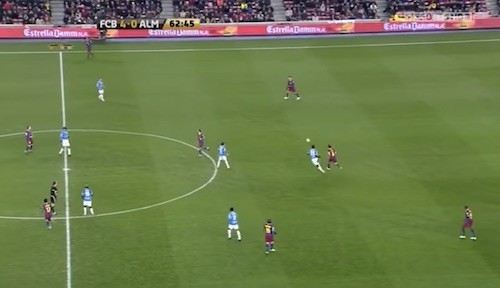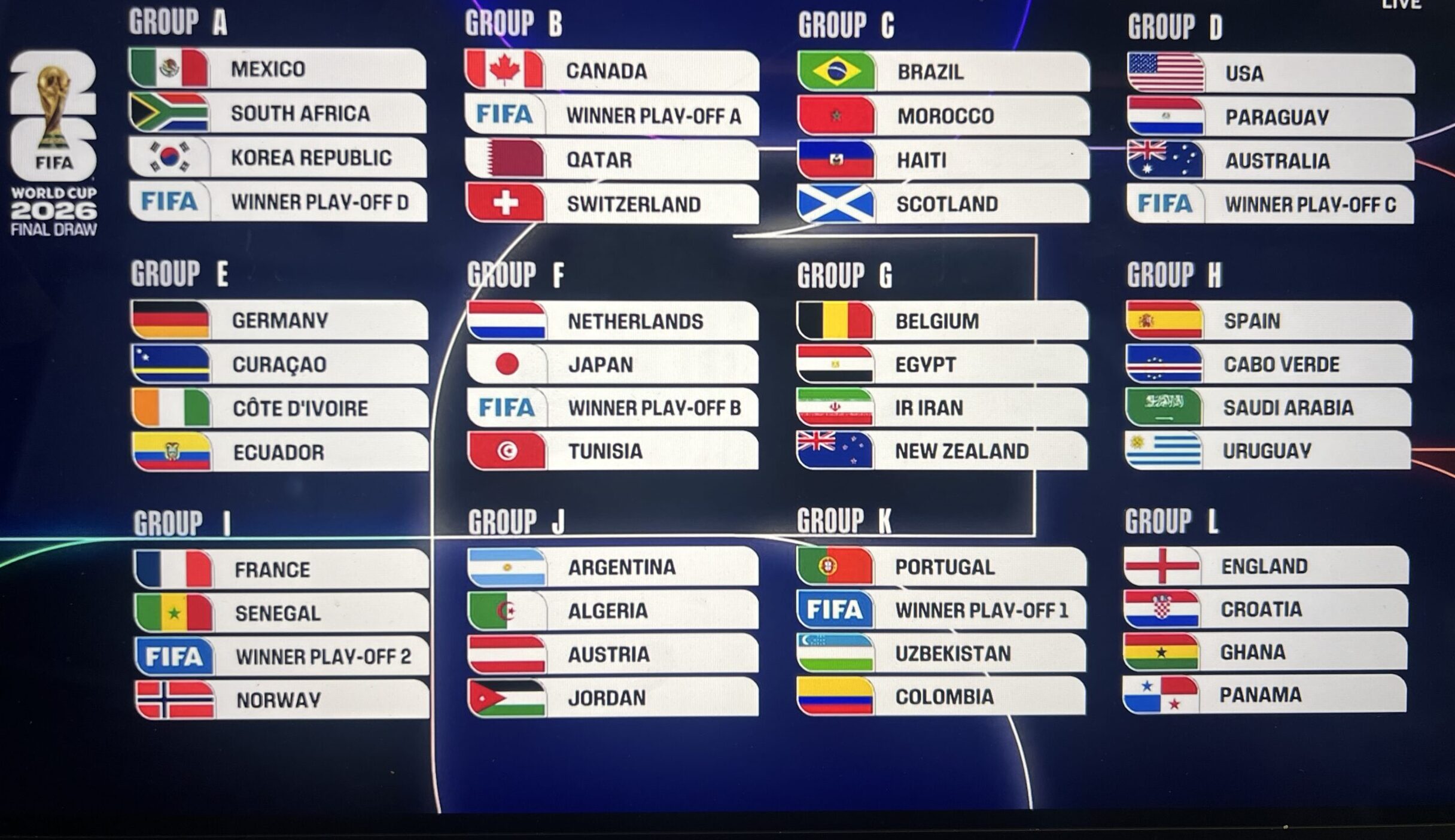Soccer passing: There’s an endless variety of soccer passing patterns and soccer drills that can help your team expand and hone its passing vocabulary. These listed below, however, are the most important passing blueprints that you and your soccer should be familiar with.
If you watch any top level soccer game, whether it’s the English Premier League, the Spanish La Liga, or the Italian Serie A, you’ll see these same passing movements – the overlap, the give and go, and short short long passes. These runs and passing patterns are the foundation of good one and two touch soccer that the best teams in the world play. A central idea to this though is every player on the team, at every position, should want the ball and be ready to support their teammates.
Watch a player like Xavi of Barcelona, you’ll see a soccer player who rarely if ever loses the ball. He’s a master of one and two touch soccer, from the give and go to the killer through ball that puts his teammate one on one with the keeper. What’s key is Xavi knows where his teammates are before he gets the ball at this feet.
Give and Go or Wall Pass
Make a pass at an angle to a teammate and he or she plays the ball back to you after you have made a run behind the defender.
The key here is suckering in the defender. Let him or her get just close enough to you so they think they have a chance of getting the ball. Once they are close to you and the angle is right, make the pass and break into the open space behind the defender.
It is important for the person making the pass back (the wall) to put the right weight on the ball so the person initiating the give and go can run on to the ball and not have to break stride. This means playing the ball to the right open space and at the right pace.
There are numerous variations of the wall pass and this is the foundation for organizing an offensive support system for your team. You can play a give and go to create a scoring chance or to relieve pressure from a defender so you have time to make a decisive pass. You don’t necessarily have to get behind the defender in order to achieve these objectives.
Short Short Long
Make two short passes in quick succession and then a long pass to spread the defense or escape pressure. In a way, you’re inviting the defense in to close you down, and once they get tight you release the ball long.
Try two small give and goes and then a long pass as the defense closes in on you. In soccer, your team will generally have time and space to make two, three, or maybe four passes in a small area. Then you’ll need to escape pressure, so the next pass should be a switch or a longer pass that breaks from the pressure entirely.
A typical play would be a few exchanges on the left with the forward and one of the midfielders and then a switch to an open midfielder or defender on the right side of the field. This is ideal of course, many times you’ll see top players forced to play back to a defender or even the keeper when they are closed down after a few short passes.
Third Man Running
Play a ball to someone, knowing that there is another teammate reading the play and running to receive this pass from the player you just played the ball to. For instance, the defender plays a driven ball into the forward’s feet because he or she sees their midfielder making a run towards the forward. Another example could be where the center midfielder plays the ball out wide to the winger or outside midfielder and the defender makes an overlapping run. The center midfielder has seen that the defender is preparing to overlap the outside midfielder and that is why he or she has made the pass.
The Overlap
An overlap is when the player with the ball plays it to his teammate and then makes a run around that player. The most common type of overlap is when the outside midfielder cuts into the middle with the ball and the outside defender makes a run down the line. A simpler run would be having a center midfielder make a pass to a winger and then run around him or her to receive the ball down the line. A good method for a player to follow is to play and follow your pace (pass and move). You don’t have to follow this directive exactly but this is a good way to move without the ball.
Like the give and go, this is a stock or fundamental play in soccer, with a number of variations.
The Exchange
For the most part, the exchange is done on the dribble. One player dribbles towards a teammate and the ball is exchanged. The player dribbles at the player with the ball on their left foot and then a teammate makes a run towards them to take the ball with their right foot. The position of the ball on the particular foot is crucial, so the defender can’t win the ball – the attacking players body is screening the ball from the defender.
So this is more often than not a dribbling exchange but we’ve put in the passing section because it’s so common and used so much in the game. For instance, a player might just shout leave it, and they then take the ball off their teammate’s foot. Or, they might be facing up field when their teammate is facing towards their own goal, so they can see the field better and call the player off the ball. However, this can get tricky, the key is communication, the player must let the player know, shout leave it or I got it clearly so the player knows they have a pass or shot in plain sight.
Checking Out
Checking out is when you move from a certain position or area to make space for a teammate – open up an area so a teammate can make a run into the space you’ve just left. An example would be a wide midfielder making a run into the middle, checking out of the space they were just in, because he or she sees the defender is moving up into attack and they would just be in the way.
The idea of checking out also refers to when you’ve check back to receive the ball but area marked tightly and your teammate, smartly, doesn’t want to play the ball to you, so you check out of the space and let someone else move into that space. Once you check out you might just be able to check right back into the space. An easy example would be checking back to receive the ball on a throw in. You might be marked tightly for one minute but as soon as you check out and away, you can check back into the ball. In a sense, checking out just means moving out of a space to lose a defender or open the space up for a teammate.
Don’t Pass Out
The ball will never get tired. So, make the ball do the work by spreading it around the field. Always keep the other team chasing the ball and expending energy. If you hold on to the ball too long the other team will win it.
Let’s look at an example scenario that might develop in a game. In this case, the rule is get the ball to your play maker.
A flow of the game might look like this: The play maker plays the ball into the forward’s feet, gets the ball back, swings it to the defender on the left side, gets it back again, plays into the forward again, gets it back and then plays it in behind the defense to an on rushing winger – who crosses the ball into the player making near and far post runs in the box. This is all in an amoeba-like progression up the field. Trying to move the ball forward and find the open spaces. Drawing the defense to you and then playing it in behind them. Of course, ideally there could be one or two passes and you’re running straight at goal.
But the idea is that soccer is made up of a series of passing patterns. Sometimes these are referred to as triangles or diamonds. These represent the support a player has around them, someone to pass to on either side and then someone who’s asking for the ball in front of them and then behind them.
Passing Tactics
There are many different styles to play and yours depends upon your team makeup and the current score of the game. In general, vary your game. If you just won the ball back after fighting for a while to get it, don’t make a risky pass. Instead just keep possession of the ball.
Try to get the ball to your play maker and allow the team to possess the ball and regain their energy and feel for the ball. However, if you see an opening, like someone making a great run towards goal, play the ball through. You can accomplish this by getting the ball to your play makers feet. You’d rather have them make those decisions and that type of pass, in most case, rather than, say, an outside back. So, when a defender wins it, he or she should be looking to get the ball to the play makers—the central midfielders’ feet.
Often, at the start of the game, both teams are playing with great energy, so you might need to just clear your lines and send the ball long out of the back. Then, as your team gets more comfortable, you can try to build out of the back. Or, you might want to make a statement when the game starts, so you send the ball long to your winger who is breaking down the line, and then try to close down the other team right from the kickoff. This puts them on their heels and gets your team right into the game and in their half of the field.
The important thing is to mix things up and keep your opponents guessing. You can accomplish this by making quick, crisp passes, playing one and two touch soccer, and playing together, as a team, with everyone asking and wanting the ball – offering their support. You and your team will be well on the way to setting up that game-winning goal if you follow this advice.
The Killer Pass
Soccer in the end is all about scoring goals. And to score you need to have that one killer pass that puts a player through on goal. This is the through ball that’s sent over a defenders head or that long ball on the ground just behind the defender.
The killer pass doesn’t just happen though. It requires two players to be on the same page, one to make the run and one to make the pass. There are really three keys to the killer pass: the opportunity, the right moment, and the right weight of the pass.
But there’s something else, players have to anticipate the play. The player has to take the chance by making that run behind the defender without being offside. The midfielder, has to have their head up and see the run being made. And then the pass, the killer pass, at just the right pace, has to be made at just the right time. As a player, always be on the lookout for that angled pass that can cut through the defense.
The Brazilian midfielder Kaka, who now plays at Real Madrid, is, like Xavi, also a master of the killer pass. See this video of Kaka showing you how to make a killer pass.
Next: Learn more about soccer passing and crossing at these pages: the stock ball, passing skills, crossing the ball, two touch soccer, play the way you’re facing, and passing standards.
Watch These Passing Videos:
Check out these great passing videos and our section on crossing:
- Ronaldinho’s – Winning Pass Against AC Milan
- Xabi Alonso Highlights (Like Beckham, Alonso makes wonderful long, cross field soccer passing plays)
- Ronaldinho – Passes with His Back
- Beckham Cross
- Coerver Soccer Passing Drills















